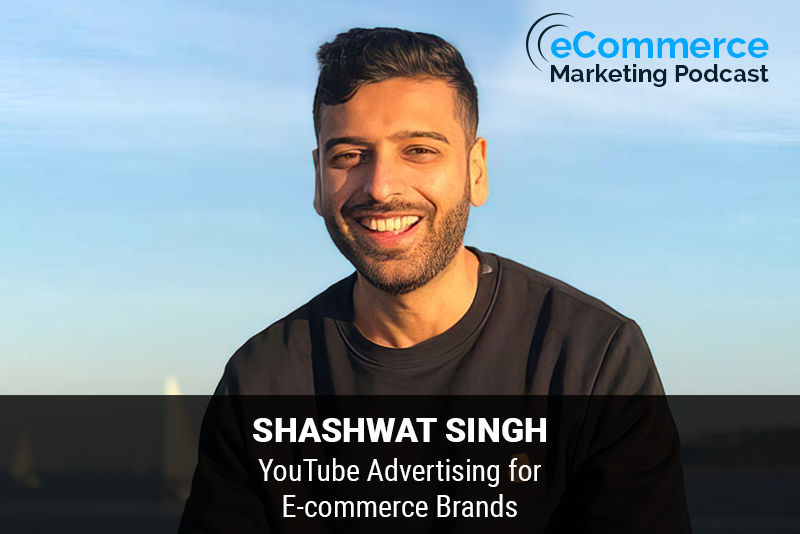
The eCommerce Marketing Podcast walks you through everything that goes into ecommerce marketing — from inbound marketing to paid advertising to conversions. Learn the strategies top marketing experts use to grow their businesses.
Shashwat Singh runs Linx Digital Agency, an agency that has generated over $30 million in revenue for their clients with YouTube Advertising. Shashwat has worked with clients like Prodigy Game, Kinobody, Amazing Selling Machine and more. With multi-7 figures under ad spend management, Shashwat’s agency is one of the leading YouTube ad agencies in the game.
In this episode, you will learn
- What are the different ad options available on YouTube
- How does a brand get started with YouTube advertising and what are suggestions on well performing ad types
- What are some tools and resources that are needed to make all these things happen
- Examples of businesses that have successfully utilized YouTube ads and have achieved success
For show transcript and past guests, please visit https://www.ecommercemarketingpodcast.com
Or on YouTube at:
https://www.youtube.com/channel/UC3PgT0NOGzpdPGQtBK0XLIQ
Follow Arlen:
Twitter: https://twitter.com/askarlen
Facebook: https://www.facebook.com/arlen.robinson.7
Instagram: https://www.instagram.com/arlenyohance/
LinkedIn: https://www.linkedin.com/in/arlenrobinson/
Past guests on the ecommerce marketing podcast include Neil Patel, Nemo Chu, Luke Lintz, Luke Carthy, Amber Armstrong, Kris Ruby and many more.
Thanks for listening. Be sure to subscribe and leave a review.

In this episode of the eCommerce Marketing Podcast, host Arlen Robinson chats with Shashwat Singh, founder of Linx Digital Agency. Shashwat shares his expertise in YouTube advertising and how his agency has generated over $30 million in revenue for their clients. They discuss effective strategies for eCommerce brands to leverage YouTube ads, tackle competitive niches, and create compelling ad content.
Key Takeaways:
- Introduction to Shashwat Singh and Linx Digital Agency (00:00:57)
- Shashwat Singh has helped clients like Prodigy Game and Kinobody generate significant revenue through YouTube advertising.
- Starting in YouTube Advertising (00:02:24)
- Shashwat began with YouTube ads in 2015, quickly realizing their potential after successfully managing a friend’s ad campaign.
- Different YouTube Ad Options (00:04:02)
- Overview of in-stream ads, responsive video ads, and the importance of targeting options like custom intent and custom affinity.
- Competitive Niches and Offers (00:08:42)
- Success in hypercompetitive niches depends on the strength of the offer rather than the level of competition.
- Creating Compelling Ad Content (00:15:33)
- Tips for crafting effective ad content: strong hooks, product demonstrations, testimonials, and clear calls to action.
- In-House vs. Outsourcing Ad Creation (00:22:07)
- Recommendations on when to create ads in-house versus hiring a production partner based on the type of ad and company resources.
- Successful Client Examples (00:25:58)
- Case studies of successful YouTube ad campaigns, including a client in the shoe industry achieving over $1.1 million in revenue.
Bullet Points of Key Takeaways with Timestamps:
- [00:00:57] Introduction to Shashwat Singh and Linx Digital Agency.
- [00:02:24] Shashwat’s journey into YouTube advertising.
- [00:04:02] Overview of YouTube ad formats and targeting options.
- [00:08:42] Strategies for competing in hypercompetitive niches.
- [00:15:33] Tips for creating compelling ad content.
- [00:22:07] When to create ads in-house versus outsourcing.
- [00:25:58] Examples of successful YouTube ad campaigns.
Guest Information:
Shashwat Singh
- Founder of Linx Digital Agency
- Website: Linx Digital Agency
- YouTube Channel: Shash Singh











